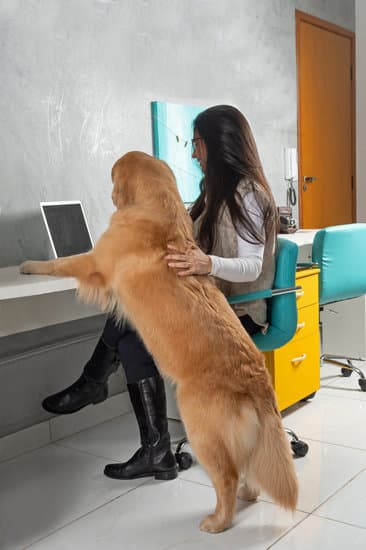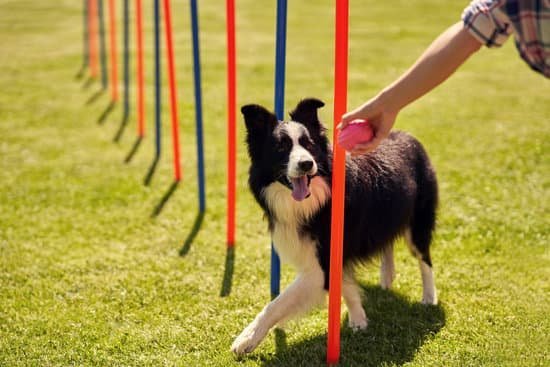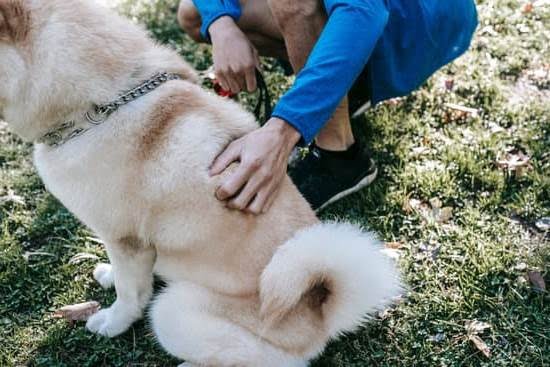Are you wondering how to train dogs to share toys? Teaching your furry friend to share is not only a valuable skill but also essential for their social development and well-being. In this article, we will explore the importance of teaching dogs to share toys and provide you with helpful tips and techniques to make the training process smooth and effective.
Understanding the behavior behind resource guarding in dogs is crucial in addressing toy-sharing challenges. Resource guarding is a natural instinct in canines, but it can be managed and even eliminated through proper training. By delving into the science behind resource guarding behavior, dog owners can gain insights into their pet’s motivations and implement strategies to encourage positive sharing habits.
Building a strong foundation of basic training commands is key in teaching dogs to share toys effectively. Commands such as “drop it” or “leave it” can help establish boundaries and promote obedience during playtime. By laying this groundwork, you set the stage for introducing the concept of sharing through positive reinforcement, which will be explored further in this article.
The Science Behind Resource Guarding Behavior in Dogs
Resource guarding is a common behavior in dogs that stems from their natural instincts to protect valuable items, such as toys or food. Understanding the science behind this behavior can help dog owners effectively train their pets to share toys. Dogs may exhibit resource guarding behavior due to a variety of reasons, including fear, anxiety, or past experiences.
To address resource guarding behavior in dogs, it is important to establish a strong foundation of basic training commands. Teaching your dog commands such as “drop it” and “leave it” can help them understand that giving up a toy does not mean losing it forever. By building trust and communication through basic training commands, you can set the stage for successful toy sharing training.
Positive reinforcement plays a crucial role in training dogs to share toys. When your dog willingly shares a toy with another pet or person, be sure to reward them with treats, praise, or playtime. By positively reinforcing sharing behavior, you are reinforcing the idea that sharing leads to good things. Over time, your dog will learn that sharing toys results in positive outcomes, making them more likely to engage in this behavior in the future.
Building a Strong Foundation of Basic Training Commands
When it comes to teaching dogs to share toys, having a strong foundation of basic training commands is essential. Commands such as “sit,” “stay,” and “leave it” are crucial in shaping your dog’s behavior and creating a positive environment for toy-sharing training. By establishing these basic commands early on, you can set the stage for successful toy-sharing training sessions.
One key aspect of building a strong foundation of basic training commands is consistency. Dogs thrive on routine and structure, so being consistent with your commands and expectations will help your furry friend understand what is expected of them. Consistency also plays a vital role in reinforcing good behavior and discouraging negative behaviors such as resource guarding.
In addition to consistency, patience is another important factor when laying the groundwork for teaching dogs to share toys. Training takes time and effort, so it’s essential to remain patient and persistent throughout the process. With patience, consistency, and the right approach, you can effectively teach your dog how to share toys in a positive and rewarding manner.
| Aspect | Importance |
|---|---|
| Consistency | Key in reinforcing good behavior |
| Patience | Essential for successful training |
| Routine | Dogs thrive on structure |
Introducing the Concept of Sharing Through Positive Reinforcement
Understanding the Concept of Sharing in Dogs
Sharing toys may seem like a simple concept for humans, but for dogs, it can be a challenge due to their natural instincts. Dogs have a tendency to guard valuable resources, such as toys, as a survival instinct from their ancestors.
However, with proper training and guidance, dogs can learn to share toys peacefully with their canine companions and even with humans. Teaching dogs to share toys not only promotes good behavior but also helps in preventing conflicts between multiple dogs in a household.
The Role of Positive Reinforcement in Training Dogs to Share Toys
Positive reinforcement is a powerful tool that can be used to teach dogs new behaviors, including sharing toys. By rewarding desired behaviors with treats, praise, or playtime, you can encourage your dog to repeat those behaviors in the future. When introducing the concept of sharing toys through positive reinforcement, it’s important to make the experience enjoyable for your dog. This will help create positive associations with sharing and increase the likelihood of your dog engaging in this behavior willingly.
Training Exercises to Teach Dogs How to Share Toys
One effective training exercise to teach dogs how to share toys is by using the “give” command. Start by giving your dog a toy and then asking them to “give” or “drop” the toy in exchange for a treat. Repeat this exercise several times, gradually increasing the duration before giving them the treat.
This will help your dog understand that letting go of the toy leads to positive rewards. Additionally, you can rotate different toys among multiple dogs during playtime to promote sharing and prevent resource guarding behavior. With patience, consistency, and positive reinforcement, you can successfully train your dogs to share toys harmoniously.
Implementing Training Exercises to Encourage Sharing Behavior
Dogs, like humans, can struggle with sharing their toys due to resource guarding behavior. However, with the right training and guidance, it is possible to teach dogs how to share their toys effectively. In this section, we will explore practical training exercises that can help encourage sharing behavior in your furry friend.
When it comes to teaching dogs to share toys, it is essential to start by building a strong foundation of basic training commands. Commands such as “drop it,” “leave it,” and “take it” will be crucial in shaping your dog’s behavior when it comes to sharing toys. By establishing these basic commands, you set the groundwork for successful toy-sharing training sessions.
To effectively train your dog on how to share toys, consider implementing the following exercises through positive reinforcement techniques:
- Start by using high-value treats to reward your dog whenever they display a willingness to share their toy
- Practice trading toys with your dog during playtime, rewarding them each time they willingly exchange one toy for another
- Engage in supervised play sessions with multiple dogs to encourage social interaction and sharing among them
By consistently practicing these exercises and rewarding positive behavior, you can help your dog understand that sharing toys is a rewarding and enjoyable experience. Remember to be patient and consistent in your training approach to see long-term success in teaching your dog how to share toys.
Addressing Common Challenges and Misconceptions in Toy Sharing Training
Training dogs to share their toys can be a rewarding experience, but it also comes with its challenges. One common misconception is that all dogs should naturally know how to share, when in reality, sharing is a behavior that needs to be taught and reinforced. Some dogs may exhibit resource guarding behavior, which can make it difficult for them to willingly share their toys. Understanding the root cause of this behavior is crucial in addressing and overcoming it.
To successfully train dogs to share toys, it’s important to create a positive association with sharing. This can be achieved through positive reinforcement techniques such as rewarding your dog with treats or praise when they willingly give up their toy. It’s essential to avoid punishment-based methods as this can lead to increased guarding behavior and erode trust between you and your furry friend.
Another challenge in toy sharing training is managing multiple dogs in a household. Each dog may have different levels of possessiveness over their toys, leading to potential conflicts. In these situations, it’s important to supervise interactions between the dogs and intervene if necessary. Gradually desensitizing the dogs to each other’s presence while engaging with toys can help minimize tension and encourage harmonious sharing behavior.
| Understanding the Importance of Teaching Dogs to Share Toys | Positive Reinforcement Techniques |
|---|---|
| Building a Strong Foundation of Basic Training Commands | Rewarding Sharing Behavior |
| The Science Behind Resource Guarding Behavior in Dogs | Creating a Consistent Sharing Routine |
Positive Reinforcement Techniques to Reward Sharing Behavior
Positive reinforcement is a powerful tool when it comes to training dogs to share toys. By rewarding positive behavior, you can encourage your furry friend to continue exhibiting good sharing habits. There are several techniques that you can use to reward sharing behavior and reinforce the concept of sharing with your dog.
Using Treats as Rewards
One effective way to reward sharing behavior is by using treats as a form of positive reinforcement. Whenever your dog willingly shares a toy with another dog or person, immediately praise them and offer them a treat. This helps your dog associate sharing with positive outcomes, making them more likely to repeat the behavior in the future.
Verbal Praise and Affection
In addition to treats, dogs also respond well to verbal praise and affection. When you see your dog sharing their toys, make sure to shower them with verbal praise, such as saying “good job” or “good boy/girl.” You can also pet them and give them physical affection as a reward for their good behavior.
Playtime as a Reward
For many dogs, playtime is a highly valued reward. After your dog has successfully shared a toy, engage in some interactive playtime with them as a way to reinforce their positive behavior.
This not only serves as a reward but also strengthens the bond between you and your furry companion while further encouraging them to continue sharing their toys. By consistently using these positive reinforcement techniques, you can effectively train your dog to share toys and promote harmonious interactions with other dogs and humans alike.
Creating a Consistent Sharing Routine to Maintain Good Behavior
When it comes to training dogs to share toys, consistency is key in maintaining good behavior. Establishing a routine that reinforces positive sharing habits will help your furry friend understand and continue to exhibit this desirable behavior. By creating a consistent sharing routine, you can ensure that your dog learns the importance of sharing toys with others in a positive and enjoyable way.
One effective way to create a consistent sharing routine is to incorporate sharing opportunities into your daily playtime or training sessions with your dog. Make sure to have a variety of toys available and encourage your dog to engage in interactive play that involves taking turns with toys. By making sharing a regular part of playtime, your dog will begin to associate sharing with fun and rewarding experiences.
Consistency also involves setting clear expectations and boundaries when it comes to toy sharing. Use commands such as “share” or “take turns” consistently during training sessions to reinforce the concept of sharing. Reward your dog with praise and treats whenever they demonstrate good sharing behavior.
With time and patience, your dog will learn that sharing toys is not only expected but also brings positive rewards. By maintaining a consistent sharing routine, you can help your furry companion develop good habits that will last a lifetime.
Conclusion
In conclusion, training dogs to share toys is not only essential for harmony in multi-pet households but also promotes positive social behavior in our furry companions. By understanding the significance of teaching dogs to share toys, pet owners can create a safe and peaceful environment for their pets to interact and play together. The science behind resource guarding behavior emphasizes the importance of addressing this instinctual behavior through proper training techniques.
Building a strong foundation of basic training commands is crucial in laying the groundwork for teaching dogs to share toys. By introducing the concept of sharing through positive reinforcement and implementing tailored training exercises, pet owners can effectively encourage sharing behavior in their dogs. Addressing common challenges and misconceptions in toy sharing training is key to overcoming any obstacles that may arise during the process.
By utilizing positive reinforcement techniques to reward sharing behavior and creating a consistent sharing routine, pet owners can maintain good behavior in their dogs over the long term. Celebrating successes along the way and continuously implementing training strategies will ensure that dogs learn how to share toys consistently. With patience, consistency, and understanding, pet owners can successfully train their dogs to share toys and foster a harmonious relationship between their beloved pets.
Frequently Asked Questions
Why Won’t My Dog Let My Other Dog Play With Toys?
Dogs not letting other dogs play with toys can be due to resource guarding, where they feel possessive over their belongings. It could also be a way of asserting dominance or establishing boundaries within the pack.
How Do You Teach Dogs Which Toys Are Theirs?
Teaching dogs which toys are theirs can be done through positive reinforcement training. Encourage them to interact with their designated toys by rewarding them with treats or praise when they choose the right ones to play with.
How Do I Stop My Dog From Being Aggressive Towards Other Dogs With Toys?
To stop a dog from being aggressive towards other dogs with toys, it’s important to first understand the root cause of the behavior. It could be fear, frustration, or resource guarding. Working with a professional trainer and desensitization exercises can help address this issue gradually.

Welcome to the blog! I am a professional dog trainer and have been working with dogs for many years. In this blog, I will be discussing various topics related to dog training, including tips, tricks, and advice. I hope you find this information helpful and informative. Thanks for reading!





